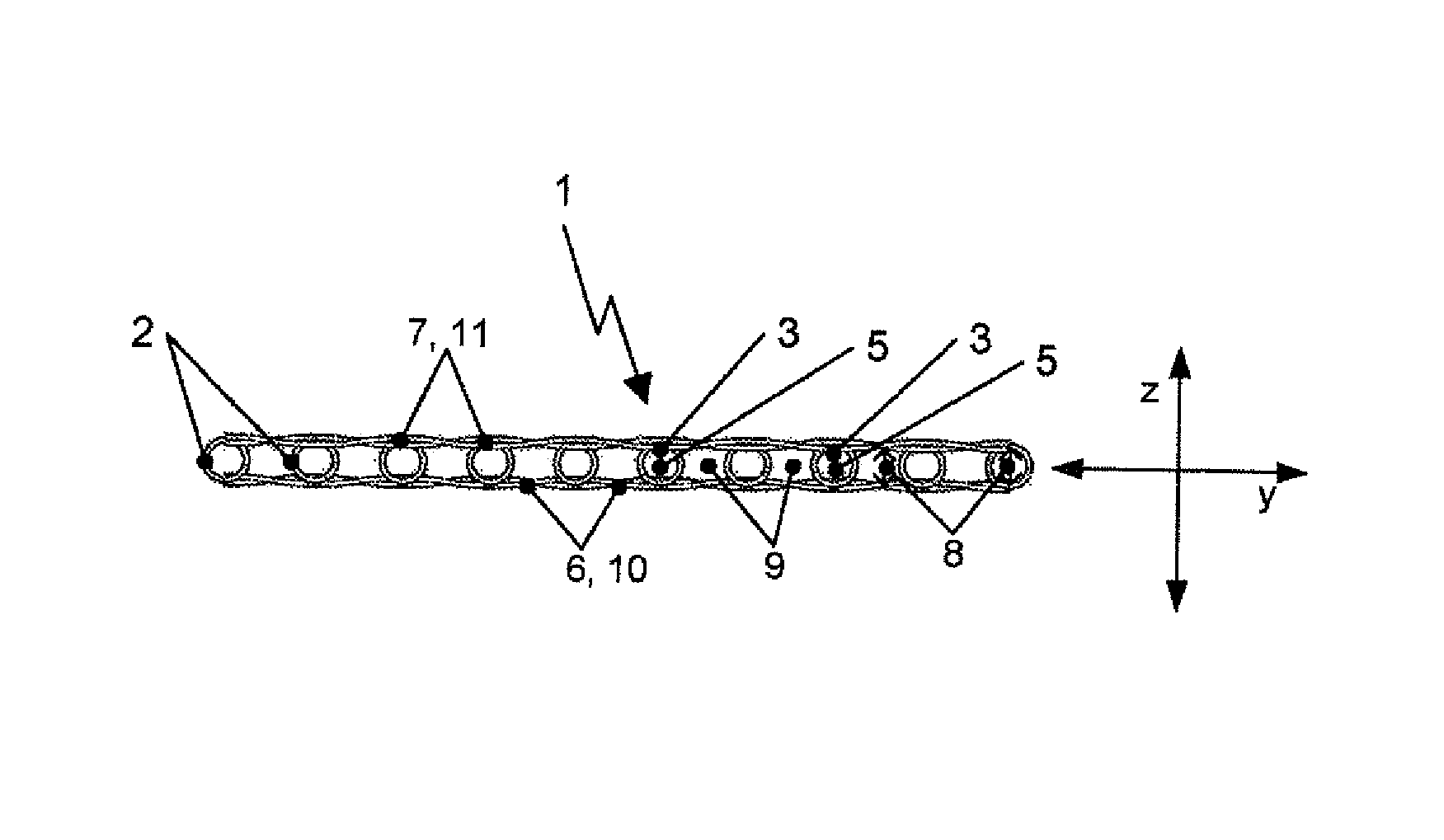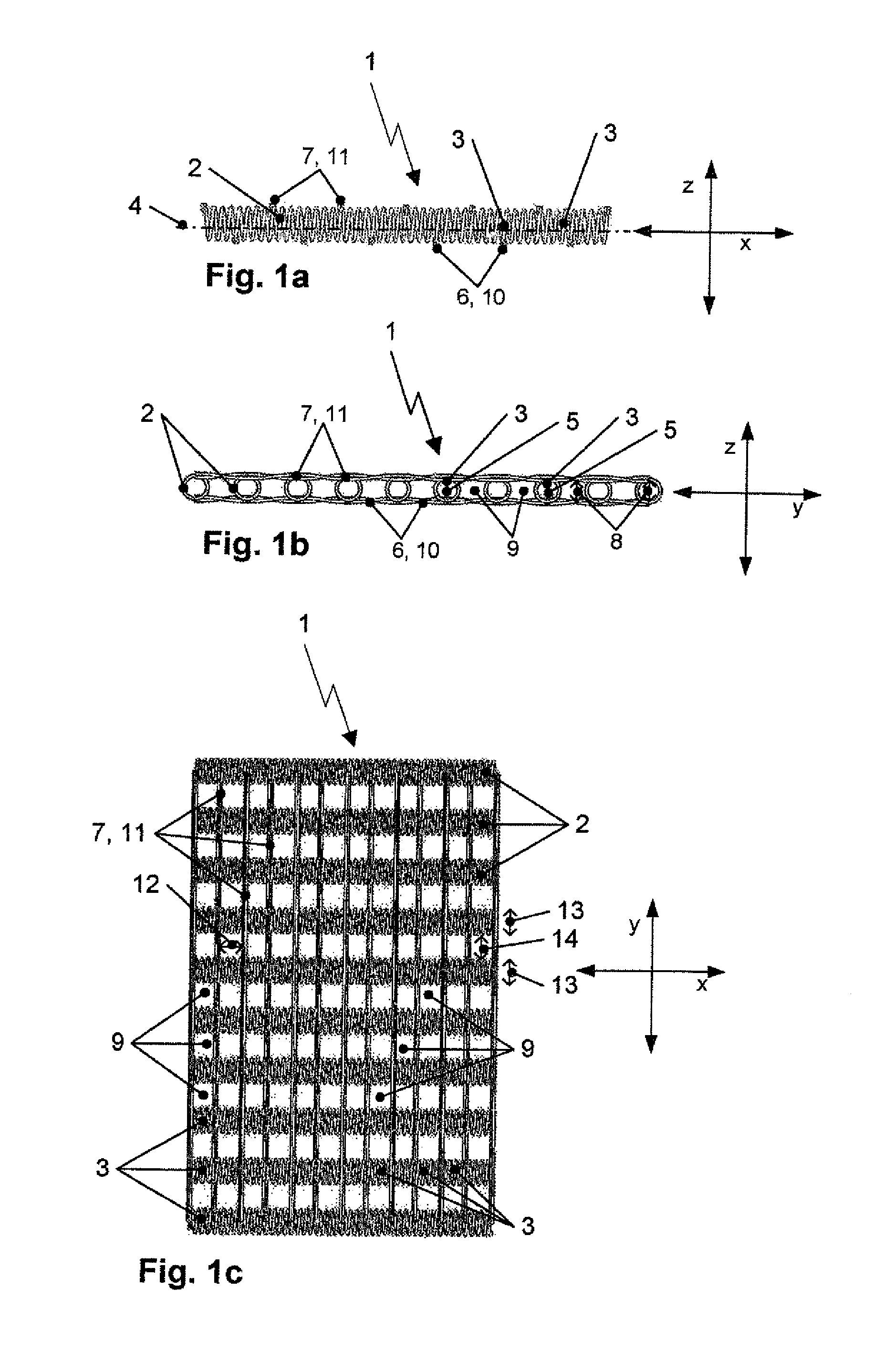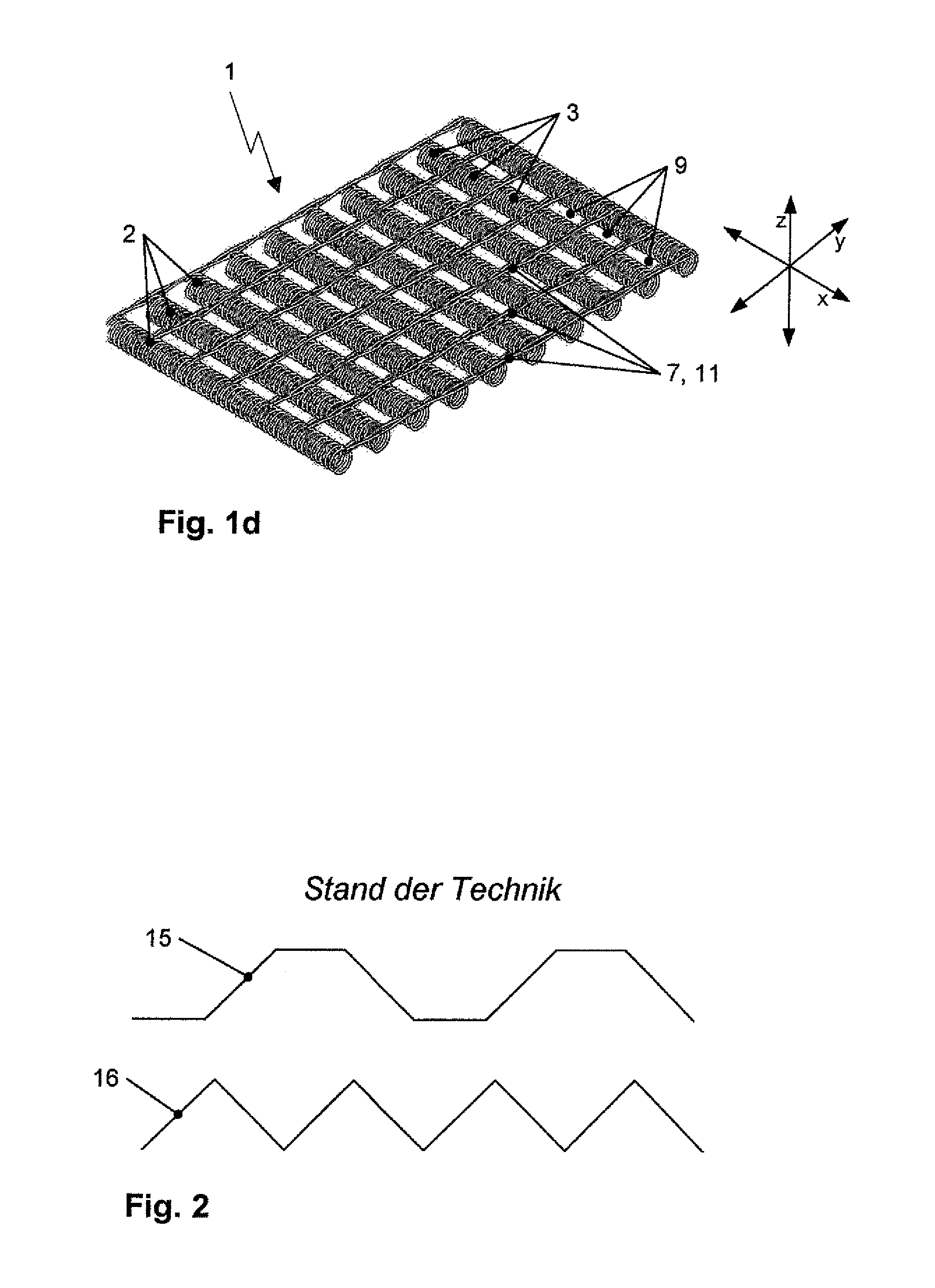Fabric structure with cellular construction
a technology of cellular construction and fabric structure, which is applied in the direction of open work fabrics, ornamental textile articles, textiles and paper, etc., can solve the problems of not being self-supporting or stable against axial displacement, the production of metal foam is very time-consuming and cost-intensive, and the method is also labor-intensiv
- Summary
- Abstract
- Description
- Claims
- Application Information
AI Technical Summary
Benefits of technology
Problems solved by technology
Method used
Image
Examples
Embodiment Construction
[0037]The drawings in FIGS. 1a to 1d represent only one of the possible arrangements for the reinforcement material. FIG. 1a shows a side view of a schematically illustrated fabric structure 1 along the weft direction x. The weft thread 2 is a so-called spiral wire 2. As FIG. 1a shows in combination with the side view of FIG. 1b along the warp direction y, this weft thread extends three-dimensional form-stable and winds itself along the weft direction x around an axis 4 extending in weft direction x and through each row of cells 3. Thereby, the weft thread 2 encloses around this axis 4 an imaginary three-dimensional elongated hollow body with a circular-shaped end face 5 around which the form-stable, three-dimensional weft thread winds in a spiral manner in the weft direction x.
[0038]In addition, FIGS. 1a and 1b show in the side views of the fabric structure 1 in weft direction x and in warp direction y, a base layer 6 and a cover layer 7 between which several form-stable spiral-sha...
PUM
| Property | Measurement | Unit |
|---|---|---|
| height | aaaaa | aaaaa |
| length | aaaaa | aaaaa |
| width | aaaaa | aaaaa |
Abstract
Description
Claims
Application Information
 Login to View More
Login to View More - R&D
- Intellectual Property
- Life Sciences
- Materials
- Tech Scout
- Unparalleled Data Quality
- Higher Quality Content
- 60% Fewer Hallucinations
Browse by: Latest US Patents, China's latest patents, Technical Efficacy Thesaurus, Application Domain, Technology Topic, Popular Technical Reports.
© 2025 PatSnap. All rights reserved.Legal|Privacy policy|Modern Slavery Act Transparency Statement|Sitemap|About US| Contact US: help@patsnap.com



